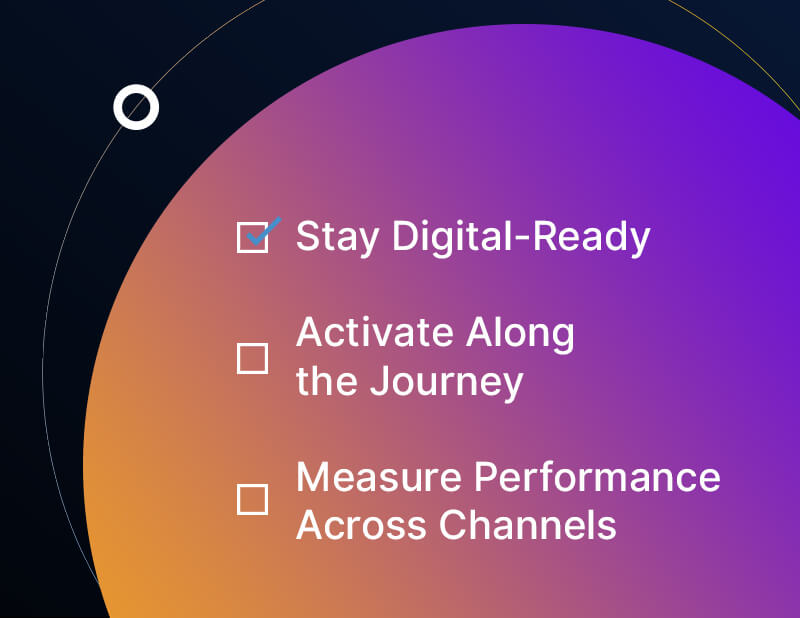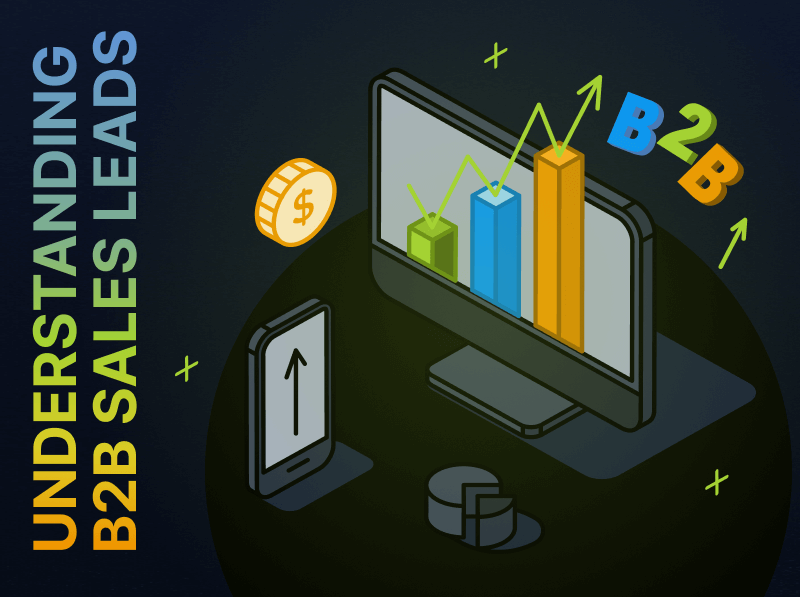The Best Advice for B2B Marketers from Gartner’s Marketing Symposium
This year’s Gartner Marketing Symposium had a lot to offer B2B marketers looking to hone their strategies in the coming months. We’re sharing some of our favorite slides from the variety of sessions and keynotes offered and recapping the best pieces of advice we gathered from the event.
The Domination of Digital in B2B Marketing Continues – Stay Ready
Gartner kicked off the event by addressing the digital-first prevalence in B2B marketing in their keynote. “Most marketers have crossed the digital business threshold, meaning digital is no longer the differentiator,” said Kristina LaRocca-Cerrone, Sr. Director, Advisory in the Gartner Marketing practice. “The key to balancing tactics and strategy now lies in breathing new life into capabilities that CMOs and their teams have had all along.”
The B2B buyer comes first, and they expanded on this by explaining that to activate your “marketing superpowers,” strategies would need to shift from being product- or lead-focused, to ones that are customer-centric. This discussion was all captured in real-time graphic recap, shown below.
“Would any of us really say that the things that we were good at yesterday are good enough for today?” asked Larocca-Cerrone, doubling down on the fact that marketers need to evolve.
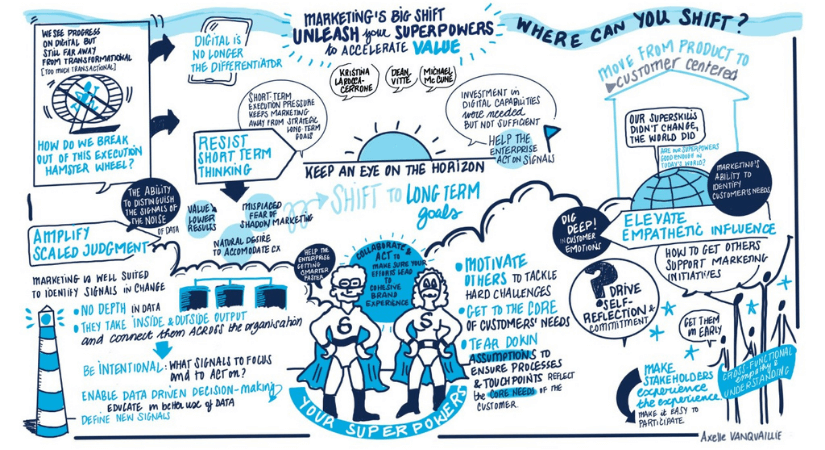
In a session from Gartner called The Fundamentals of Marketing and Sales Alignment, they showcased how marketing leaders have increased the way they are prioritizing digital, now more than ever. In the next beat, they shared that over 80% of B2B buyers prefer a digital commerce experience. It’s clear that digital is here to stay and that marketers who don’t shift focus from more traditional strategies are sure to get left behind.
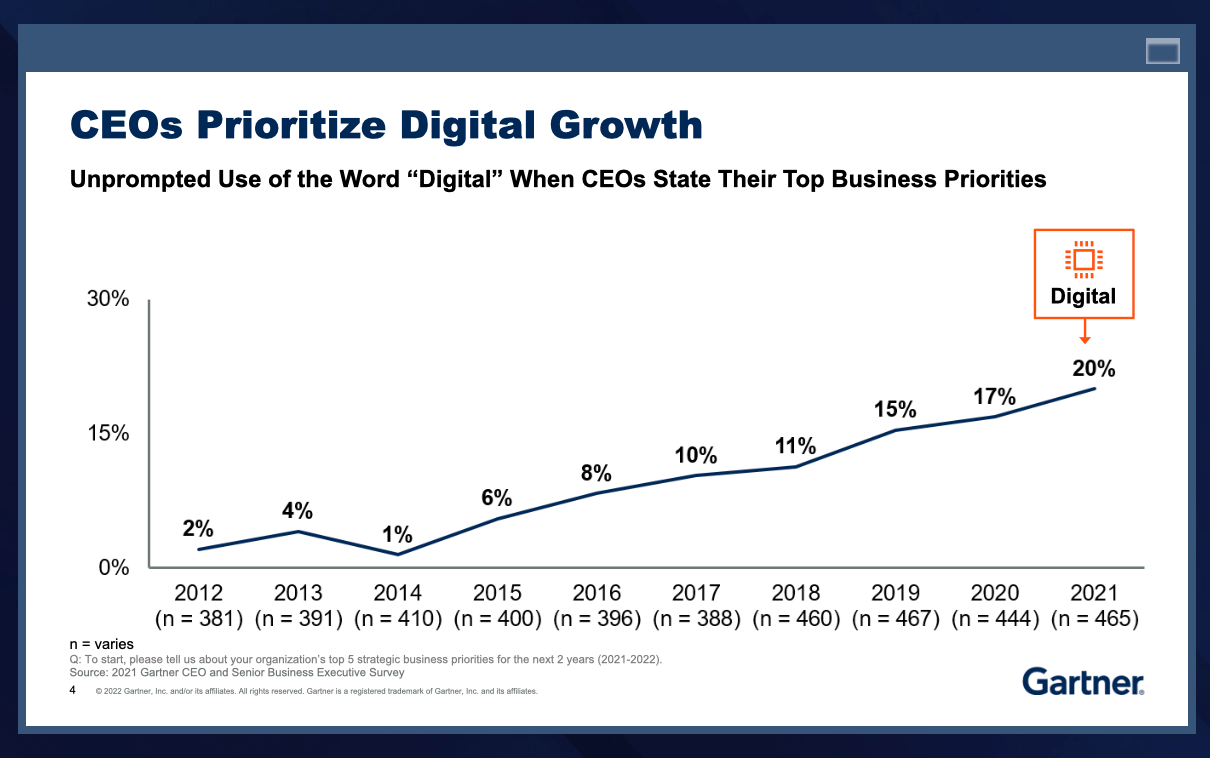
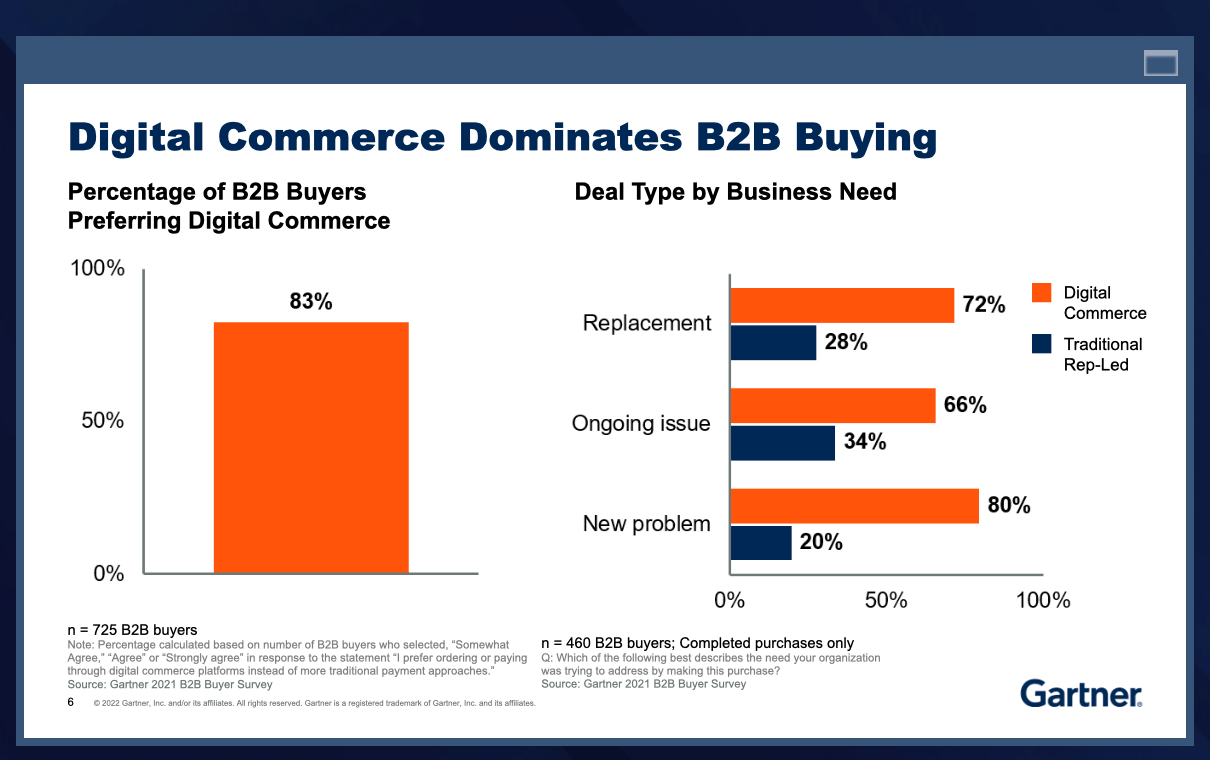
Get Comfortable with the Complexities and Complications
This shift towards a digital, self-service type of experience for B2B buyers means that their journey has become increasingly more complex. The number of digital touchpoints has risen dramatically, and Gartner outlines the complexity in the slide below. On top of this, buyers expect marketers to meet them on the channels that they are actually doing their research in—at the right time, with the right message.
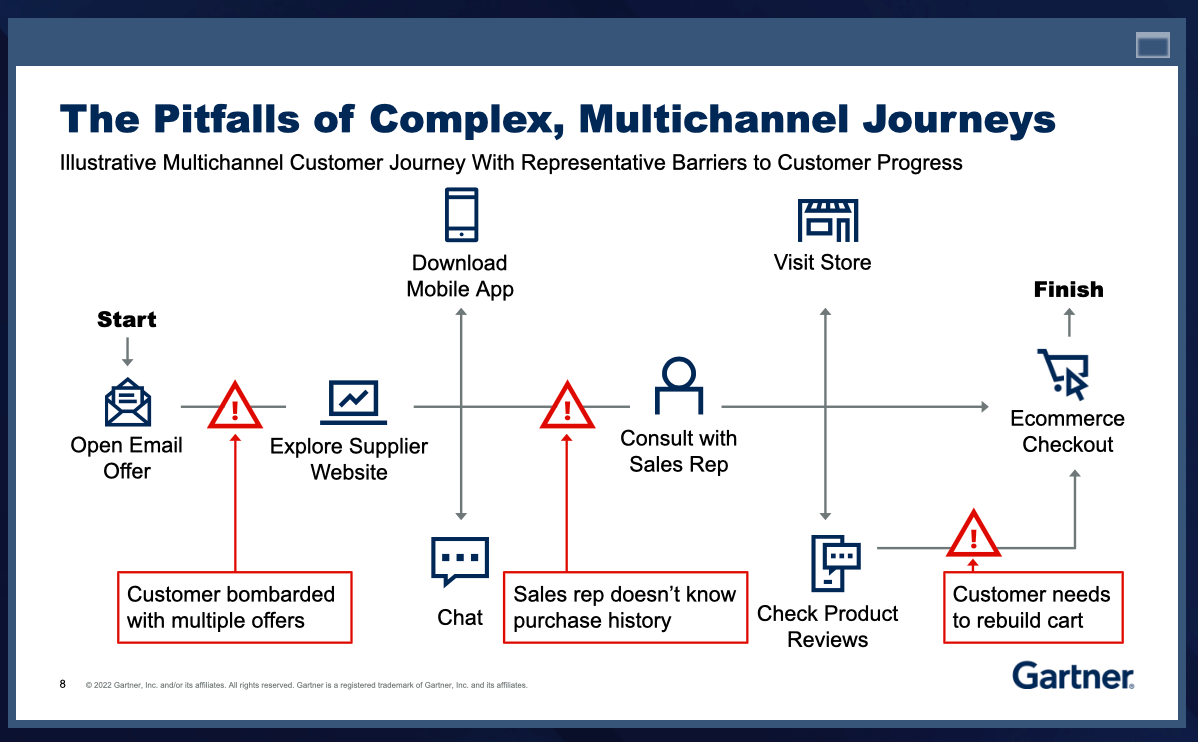
To add another layer, Gartner shares that marketing budgets haven’t necessarily recovered post-pandemic, as shown below. This means that marketers need to find ways to make their dollars work smarter for them, not harder. They need to find efficiencies in governing their data, activating strategies across all their channels, and measuring performance of those strategies to inform future iterations.
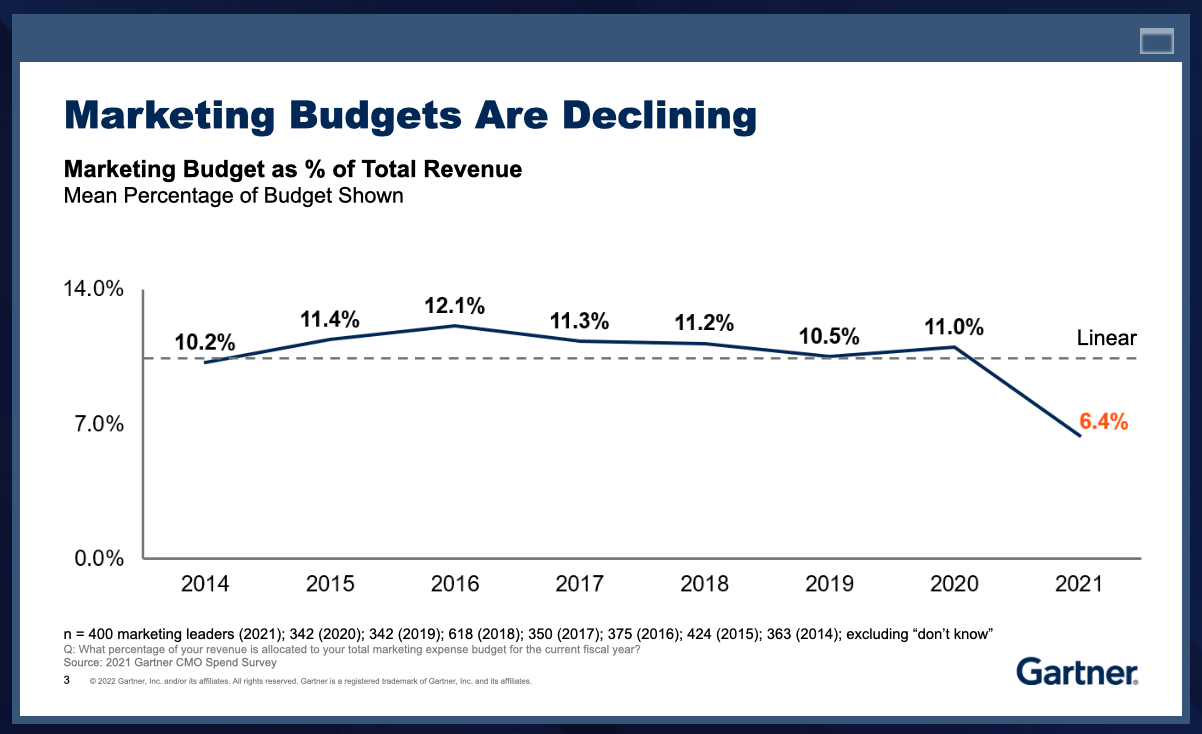
Learn to Luvvie Your Marketing Efforts
On the final day of the symposium, Gartner held A Conversation with Luvvie Ajayi Jones, three-time New York Times bestselling author, speaker and podcast host who thrives at the intersection of humor, media, and justice. Luvvie offered a few quotable pieces of advice for marketers when it comes to their approach with buyers:
- “When you make marketing more personal, that’s when it becomes more universal, because more folks can connect to it… It’s about the storytelling, about the why, about what value this product offers you.”
- “They (consumers) want the brand to feel like a mom-and-pop shop, they want the brand to feel like a friend… I think brands shouldn’t shy away from humanity… move away from feeling robotic and automated and feel like a human interaction.”
These thoughts feel more important than ever as B2B marketers are trying to get through to their buyers on their complex journeys, and they’re taking a more B2C approach in their tactics. As the use of digital increases and channels like social move to the forefront, it’s important to understand that humans are on these platforms and those humans are the ones making the buying decisions.
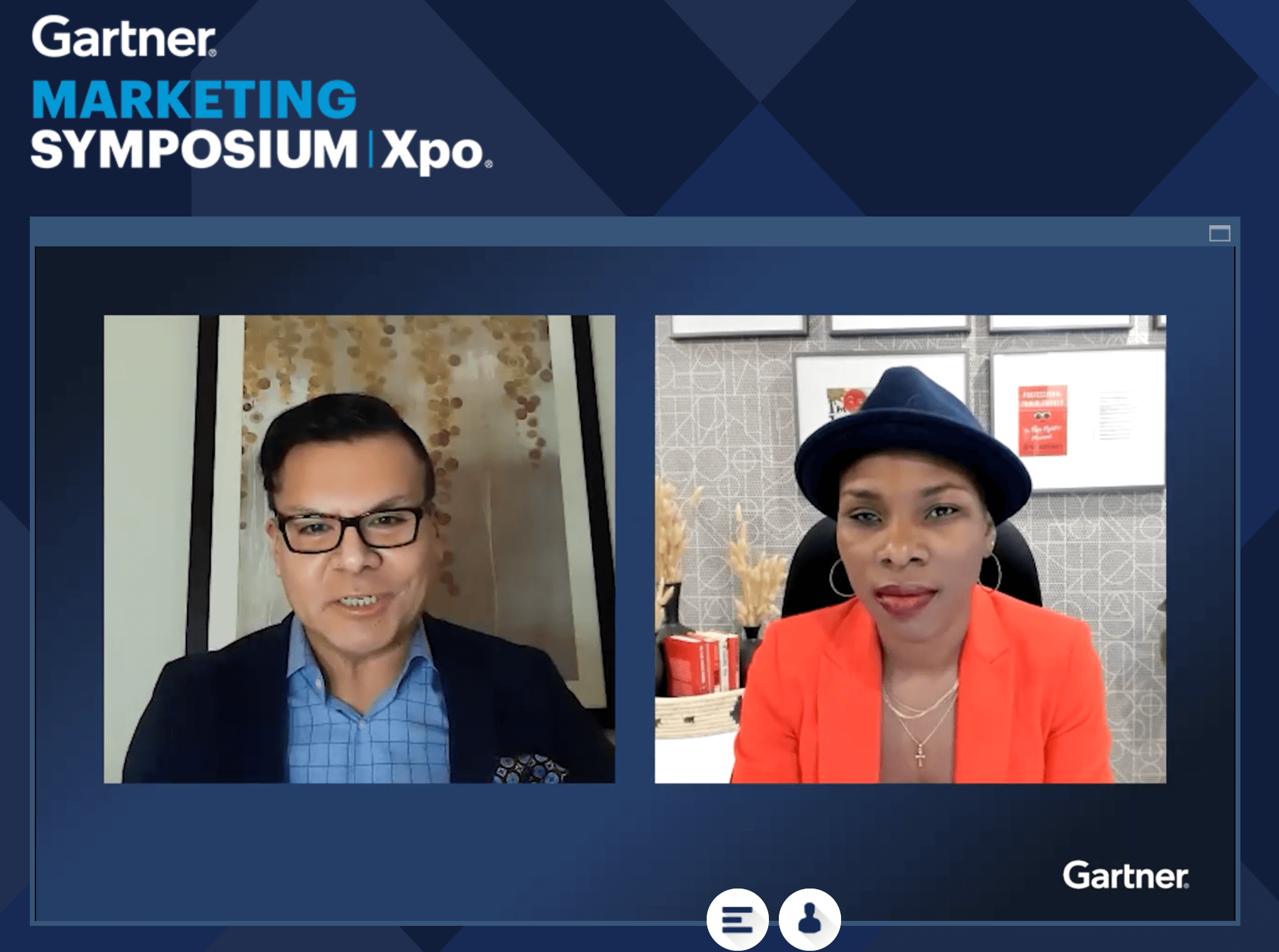
Luvvie also shared that she has three questions she asks herself when determining if an idea will work, guidelines for making sure she’s not being impulsive or just hearing our own voice:
- Do I mean it?
- Can I defend it?
- Can I say it thoughtfully?
- If the answer is YES to all three, then I say it and support it.
Sage advice? Absolutely. Marketers that acknowledge and show understanding of the new B2B landscape and buyer-centric journey, and then execute strategies accordingly, should be able to achieve performance results they can stand behind. The strategies that work should then be scalable and repeated.
Make Your Teams Work for You
Integrate CMO Deb Wolf led a session titled, “The Time for Precision Demand Marketing is Now.” She shared how marketing leaders should analyze their org structure, marketing technology and strategies against the Marketing Maturity Curve. Once teams have been assessed according to these three pillars, they can start to measure performance and success. The session also included characteristics of highly effective teams, shown below.
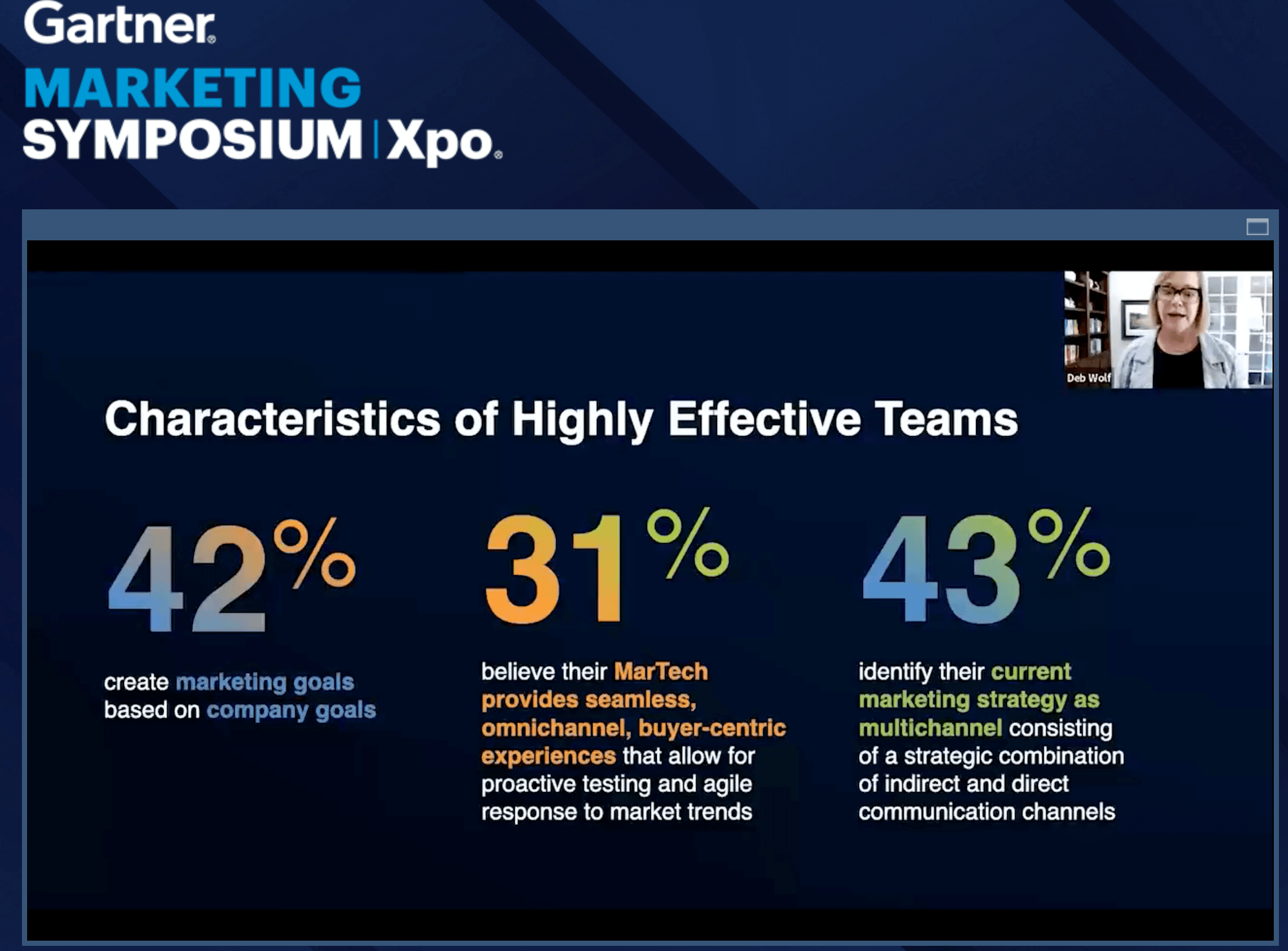
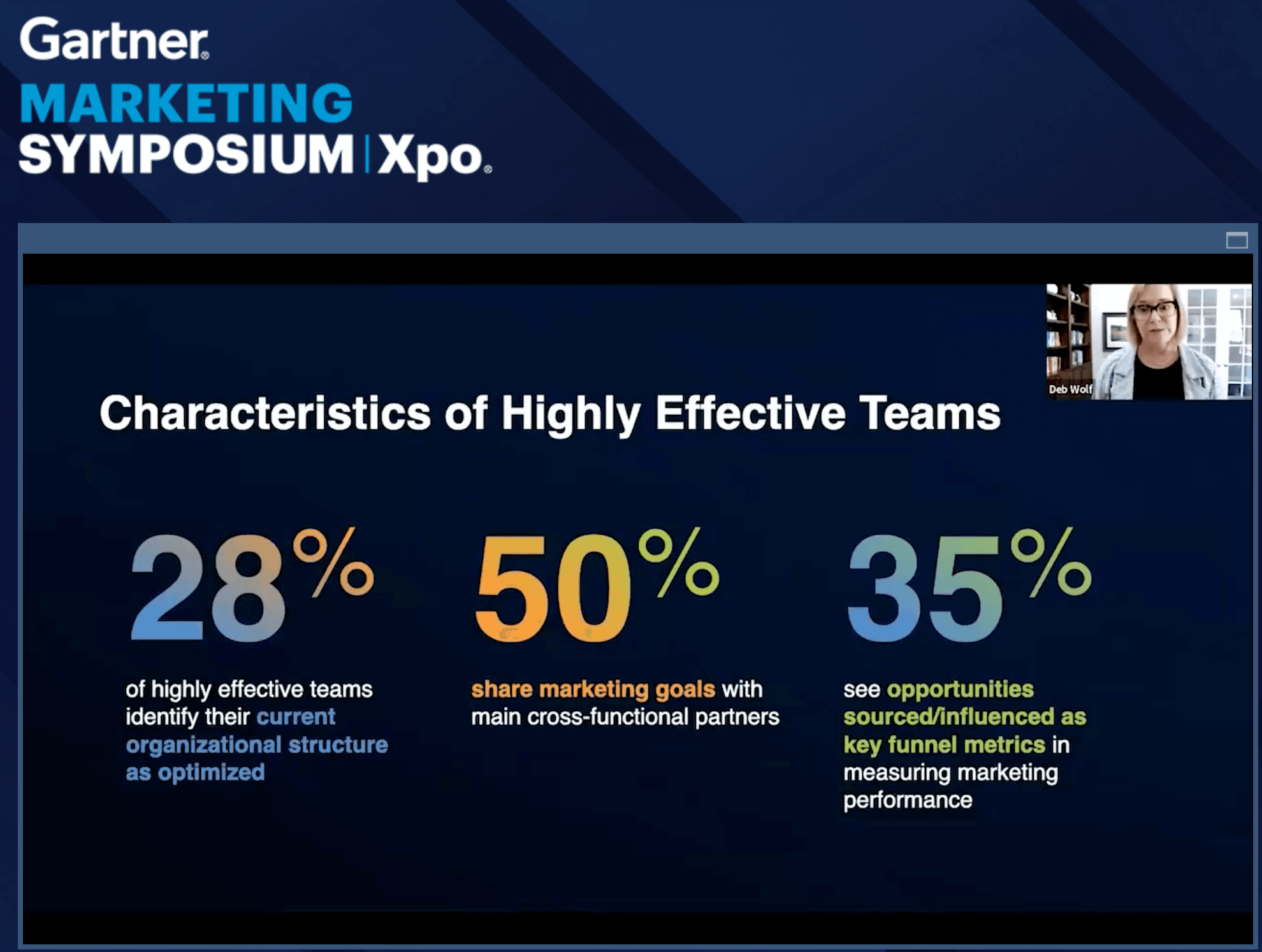
Discussions on account-based marketing (ABM) and the way it impacts B2B teams also figured prominently throughout the event. In Gartner’s “Fundamentals of Marketing and Sales Alignment” session, they shared how crucial alignment is for sales and marketing teams, especially when it pertains to audience, messaging and measurement. The slides below showcase disjointed strategies between sales and marketing under each, along with the benefits of when they come together.
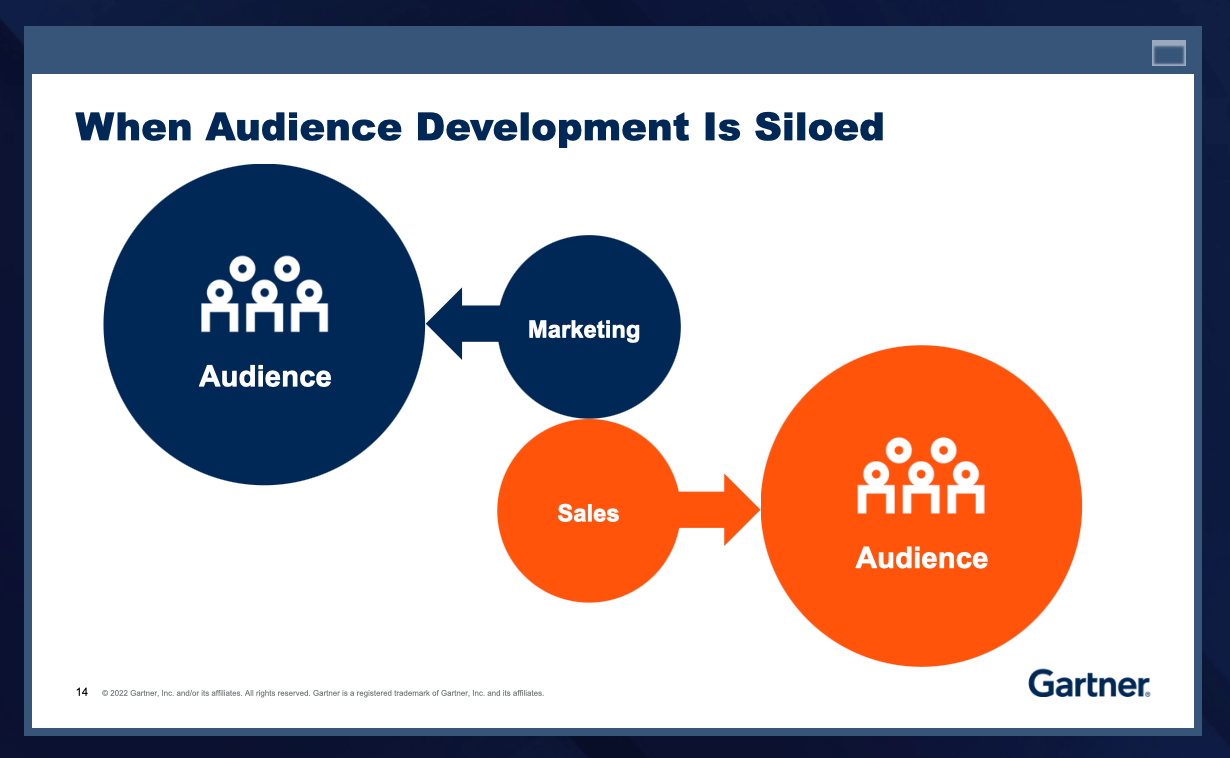
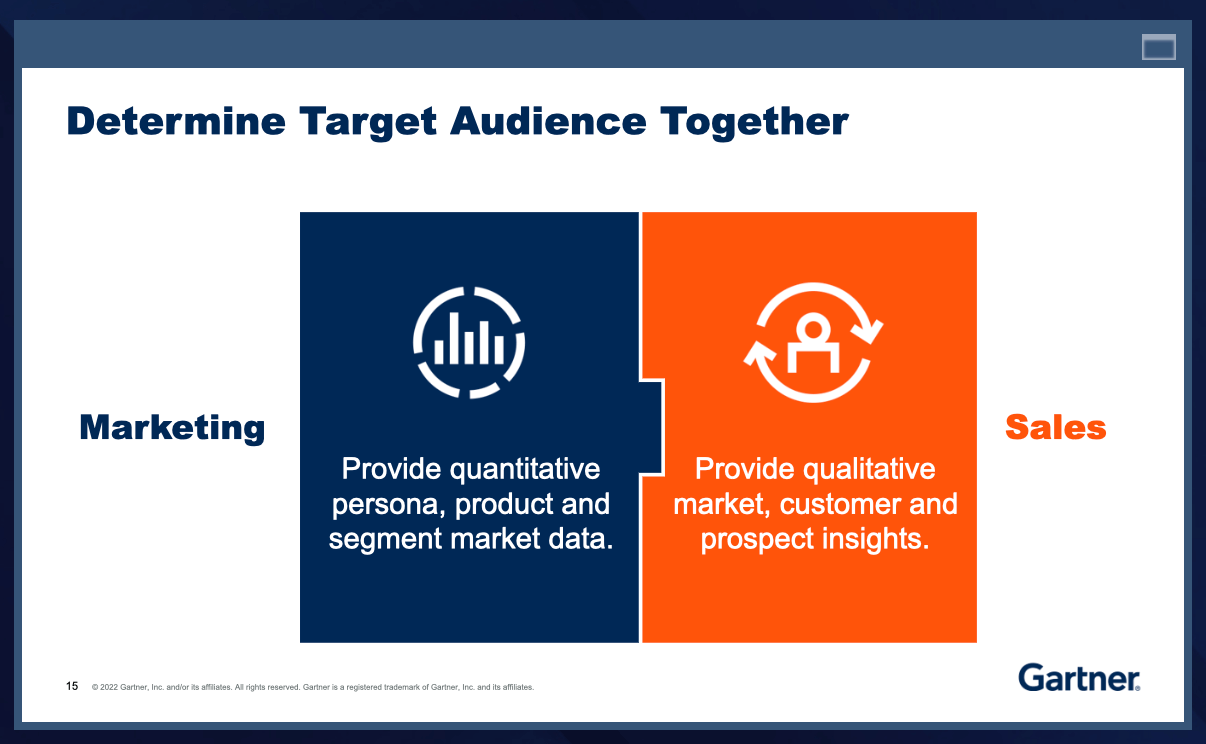
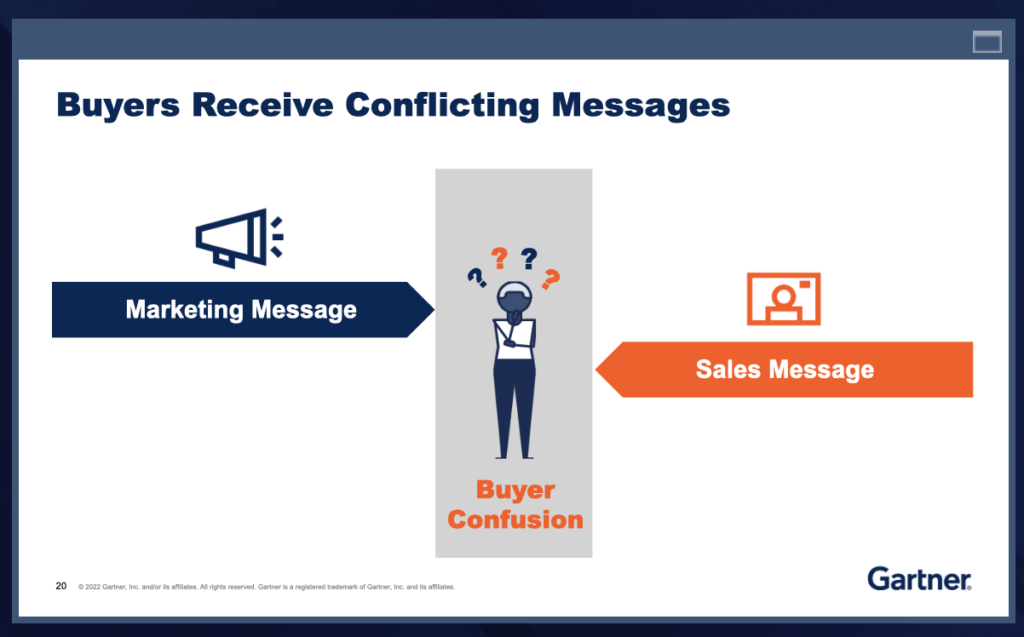
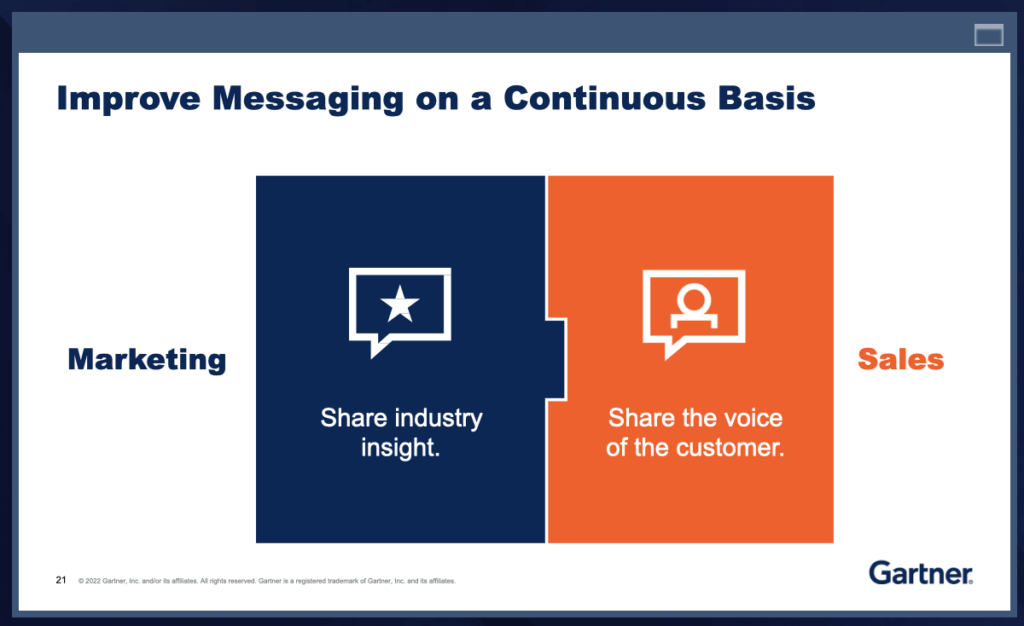
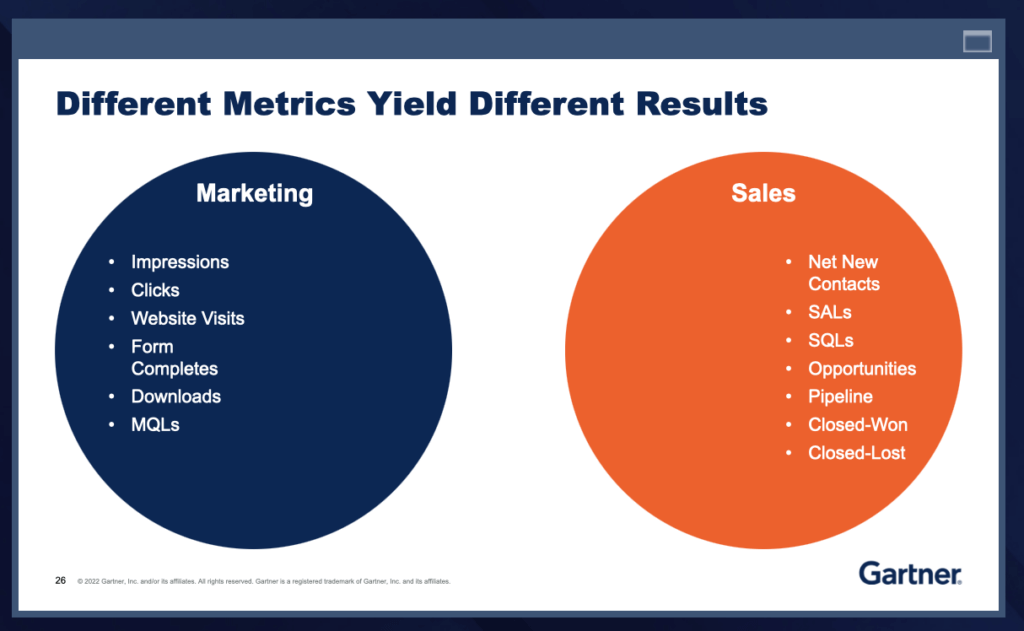
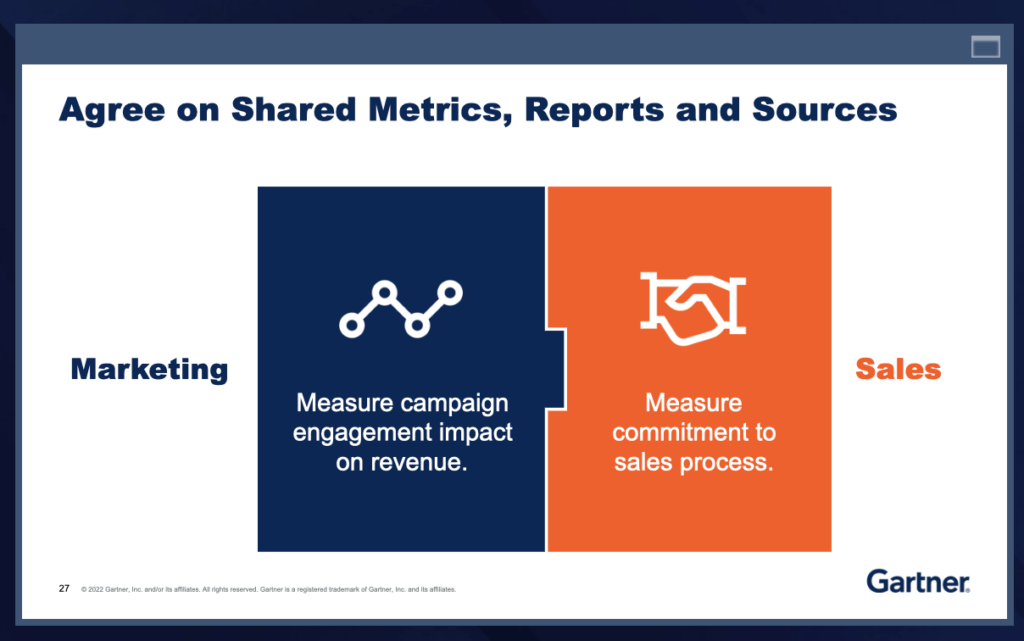
Activate Along the Customer Journey
With a greater understanding of the buyer and solutions that offer better data governance and performance measurement, Gartner discussed the Orchestration of the Customer Journey.
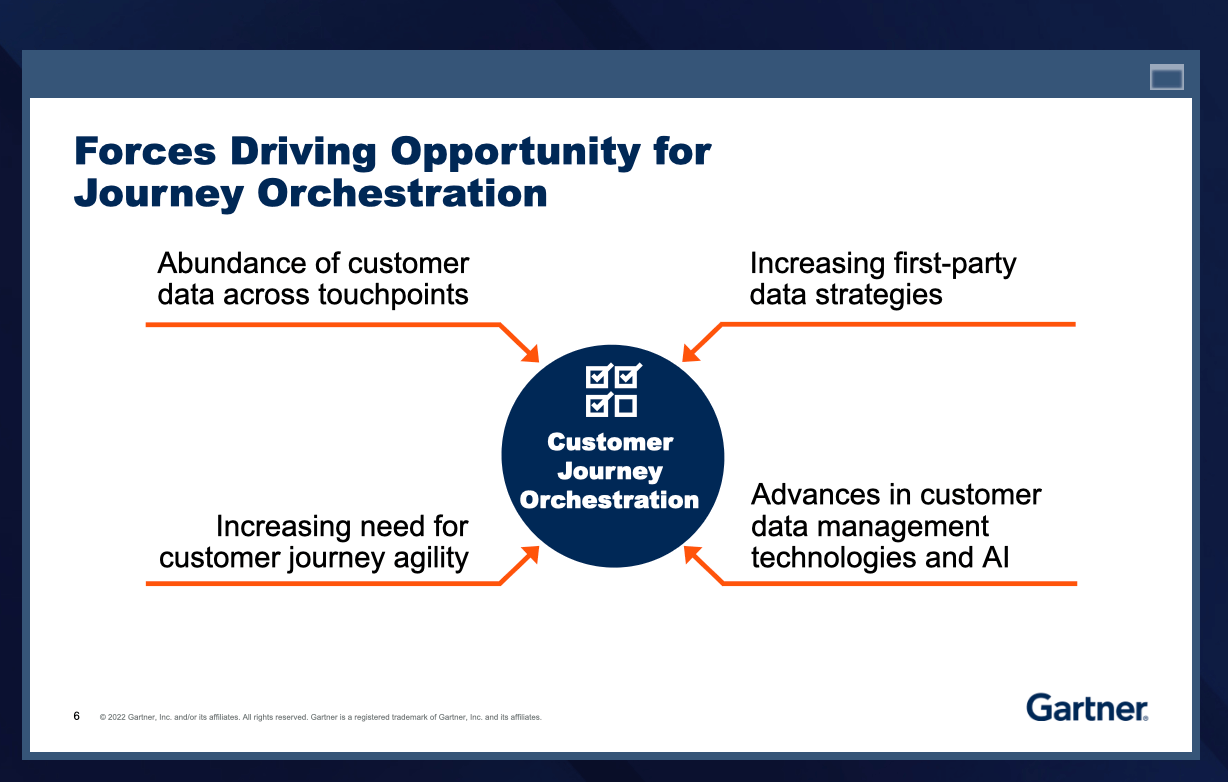
“Customer journey orchestration promises us that if we could stack the right capabilities together, if we could use all the data we have at our fingertips to bring customers the information they need at the right time in an automated and repeatable way, then we could ensure that at any given moment on any given channel, a customer would receive the single next best commercial action recommendation for them,” shared Gartner Analyst Kristina LaRocca-Cerrone.
“Great customer journey orchestration drives unplanned purchases – uses what we know the customer has done already, to recommend the next thing they should do, and gets them to open their wallet wider, to buy more often and to buy from us.”
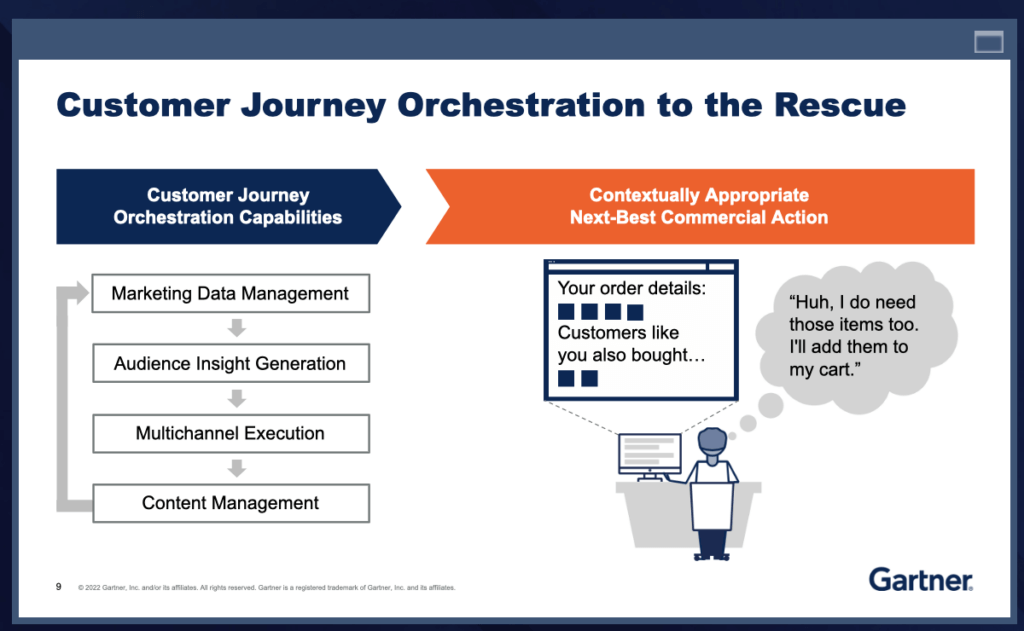
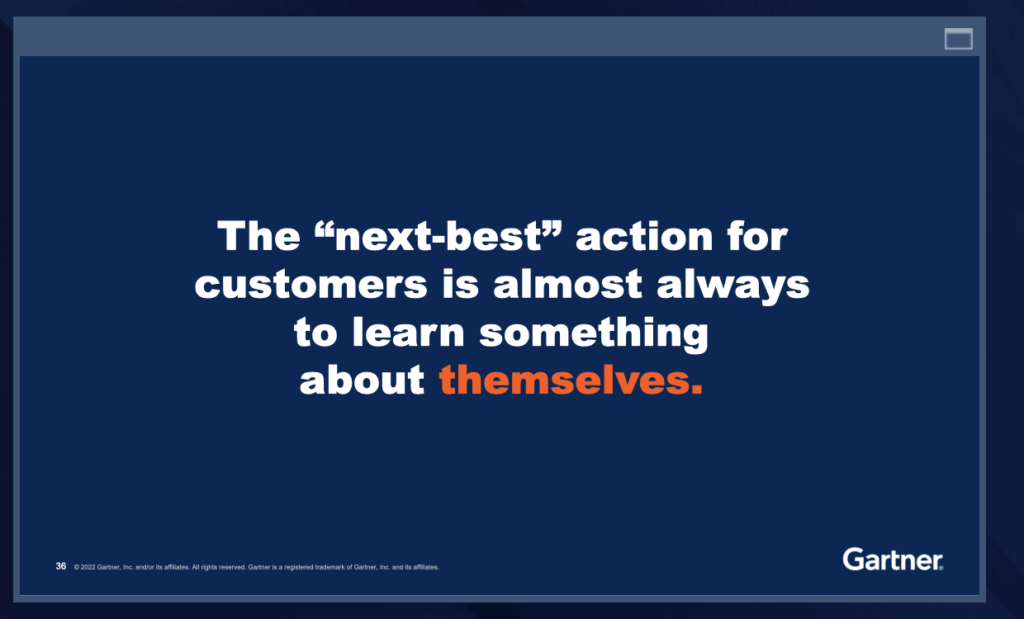
At Integrate, we call this cross-channel activation. Activating, governing, and measuring campaigns across multiple channels so we can reach our buyers where they are, when they want, and with the information they need.
Think About Measurement Holistically
Once marketers understand the buyer, develop strategies focused on their journey and activate those strategies across channels, they need to be able to measure and iterate. In an exhibitor session from Salesforce, they shared that “98% of marketers globally emphasize the importance of having a complete, centralized view of all cross-channel marketing.”
Now that marketers are ensuring activation across their various channels, they need a way to measure performance across those channels to manage success.
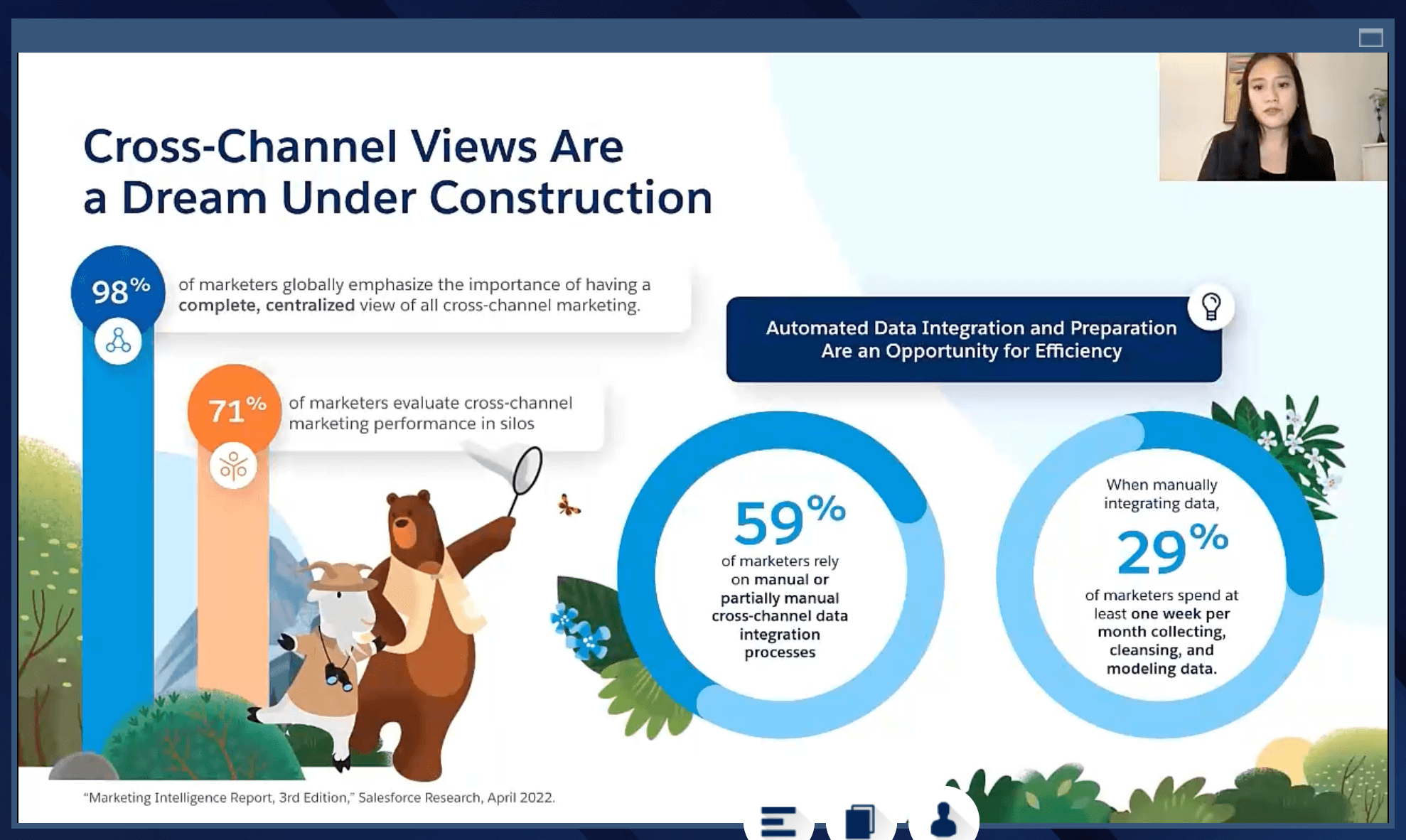
Take the Advice to Heart
It’s now well-established that B2B marketers are living in and adjusting to a buyer-driven, cross-channel world. They must prioritize their marketing strategies around digital and the increasingly complex buyer’s journey. This means ensuring personalized buying experiences, reconfiguring team structures, activating across channels, and measuring holistically. For more advice on how to succeed in today’s B2B world, check out our blog on the new B2B playbook.
